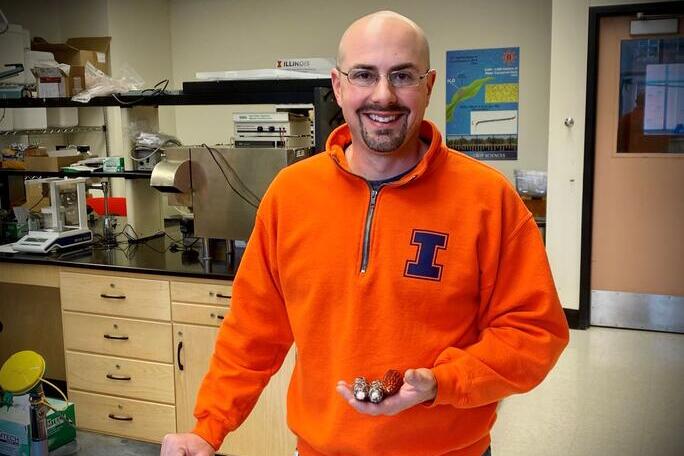From snack to science: Innovative grant brings popcorn into the classroom

In a few years, popcorn could become a standard element in science classrooms across Illinois and the nation. With funding from a new USDA grant, a University of Illinois Urbana-Champaign crop scientist and collaborating educators are developing a popcorn-based curriculum to reinforce concepts around agricultural science, artificial intelligence, biotechnology, computer science, genomics, research methods, and more for 4-H and high school students.
The funding may be new, but Tony Studer has proselytized the power of popcorn to engage the younger generation for nearly a decade.
“Everybody knows popcorn, but students don’t typically think about where it comes from or how science is used to improve the food we eat,” said Studer, associate professor in the Department of Crop Sciences, part of the College of Agricultural, Consumer and Environmental Sciences (ACES) at U. of I. “Using popcorn to scaffold more complex science concepts keeps students more engaged because it’s already something they’re familiar with.”
Early versions of his “pop-omics” curriculum had students popping kernels from Studer’s popcorn breeding program, taking data and notes to link the appearance of unpopped and popped kernels. By tracking popping quality in the context of the popcorn’s genetic makeup, the students learned about genes, inheritance, and agronomic properties. And Studer obtained valuable data, which he used to inform his breeding program and develop even better popcorn.
The grant will expand the curriculum to include hands-on lessons on machine learning and artificial intelligence designed to meet Next-Generation Science Standards. Studer has partnered with faculty at the National Center for Supercomputing Applications at U. of I. to develop an AI algorithm predicting popped characteristics from images of unpopped kernels.
“AI is the big thing. This would be a way for students to interact with an AI model in a very tangible way. And it will also change our internal breeding program. If I can throw down 10,000 kernels and have it pick the top 10% before I even grow them, that'd be amazing. It would change the way we do things,” Studer said. “But we don’t know yet if the AI can beat students in the more labor-intensive process of evaluating kernels by hand. We’re excited to find out.”
Studer has already worked with teachers to implement programs in three Illinois high schools, and he intends to expand to ten or more by the end of the three-year grant period. But he sees the program taking off statewide and nationally in due time, as the project aims to develop a standardized Next Generation Science Storyline that can be delivered in any high school classroom without direct interaction with Studer’s lab.
“The curriculum we're writing will be open source, and we expect it to go national. I can only be in so many high schools, so we’re building in scalability,” he said. “We’re asking ourselves what experiences we can include so that more kids can be involved.”
Pop-omics got its start as an outreach activity for Illinois 4-H students, and that will continue under the new grant structure. Studer and collaborating teachers will test new curricular ideas with 4-H’ers, who tend to be more interested in agricultural programming.
“4-H students are super committed, and they're a sharp group,” Studer said. “If they're not into something we come up with, it's not going to float in a public high school general biology class.”
Studer will deploy 4-H special interest (SPIN) clubs and a summer academy at the U. of I. campus, adapting successful lessons for older, less agriculturally minded students.
The grant is also partnering with the Illinois Farm Bureau and the Illinois Agriculture in the Classroom (AITC) program to create learning materials for elementary and middle school classrooms, with the hope of connecting with the national AITC program one day.
The overall goal of the grant is to increase science literacy, critical thinking, and acceptance of technology in today’s youth. But it’s also about protecting food security in an uncertain future.
“Future challenges to agriculture and food security can only be overcome if we educate young people. Few of today’s youth have a direct connection to agricultural production or agricultural education,” Studer said. “Without positive experiences in agricultural topics, students may be reluctant to explore educational opportunities or embrace science and technology vital to sustainably feeding a global population.”